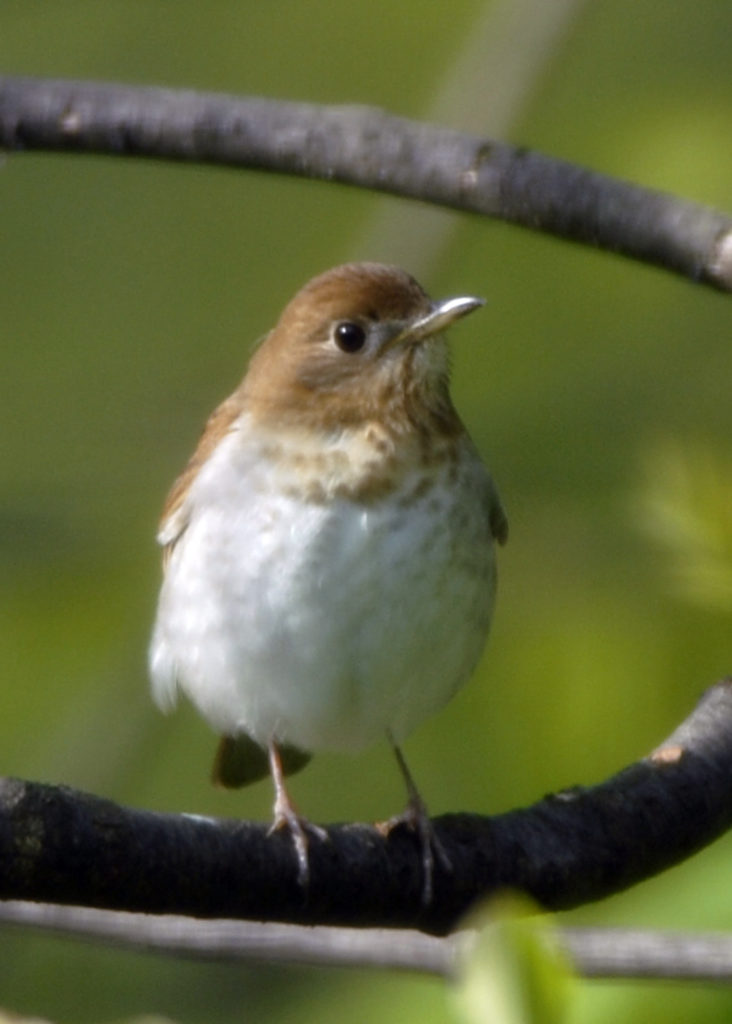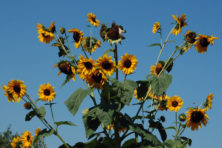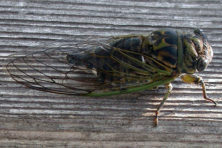Roy Lukes: The Thrush Family of Birds
- Share
- Tweet
- Pin
- Share

It surprises many people to learn that two of their favorite birds, the American robin and the eastern bluebird, belong to the thrush family.
Upon hearing the word “thrush,” many automatically think of several of the other thrushes that nest in Wisconsin including the hermit, wood, Swainson’s and veery. The gray-cheeked is seen in our area during spring and fall migration but nests in the far northern parts of the continent.
The robins and bluebirds have been in this region for more than two months already, but the other thrushes are later to arrive, the hermit being the earliest returning of the remaining species. What always impresses us when we observe the other thrushes is their shy, almost secretive nature. They allow you to get just so close before they fly off, at least far enough to feel out of danger.
Recently I happened to look out a back window in our home, facing the north, and there, within 25 feet from the house, was a Swainson’s thrush foraging for insects in the grass. What immediately caught my attention was its manner of hopping several inches and then ever so slightly shaking or vibrating its legs, stirring up some action as it searched the ground for its next meal.
Fortunately it was quite late in the afternoon, and the bird apparently was slowing down somewhat, satisfied to stand very still for 10 or more seconds at a time. In less than a minute I was snapping pictures of the timid creature.
One feature that quickly allowed us to call the bird a Swainson’s thrush was its distinctive light-colored eye ring. My association between the eye ring and the word “Swainson’s” is that Swainson’s also has a ring – an “O” in it. The other very similar thrush, the gray-cheeked, does indeed have grayish cheeks, but it doesn’t have a ring around its eyes, nor does it have an O in its name.
The breast of the wood thrush is very heavily spotted in comparison with the other similar thrushes. The light cinnamon-colored veery has the least and palest spotting of all these thrushes, while the hermit thrush has moderate spotting and a rusty-colored tail that it frequently cocks upward and then slowly lowers.
We recently had a wood thrush use our birdbath several days in a row. Its head and neck is a richer rusty brown than the more gray-brown of the other thrushes. Three of these thrushes are fairly common nesters in our region: the wood, hermit and veery. Wood thrushes used to be much more common 40 or more years ago than they are now.

The hermit thrush has a narrow eye ring, dark-spotted breast and a rust-colored tail. Photo by Roy Lukes.
It was a thrush evening on Memorial Day, May 29, 2006. We watched a hermit thrush bathe at 7:30 pm, and then a Swainson’s used the bath at 7:35 followed by a wood thrush at 7:45 pm. During dry weather it is vital to provide clean fresh water on a daily basis for birds for drinking, bathing and nest-building. Robins and eastern phoebes require mud for their nest base.
Hopefully some of you did something special on International Migratory Bird Day, May 14 this year. Friends of ours did a “Big Day” count and found 102 species of birds. This full-day bird watching and listening adventure is done by many groups throughout the state and the country in May.
It stands to reason that this observance implies that we must work across state and national boundaries with many different people, governments and conservation groups in preserving bird habitats. I like to bring it closer to home and think that the people from a county must also come together to realize the great importance of migratory birds and then to establish an ongoing program to help them.
Having enjoyed birds for more than 80 years, I am convinced that one does not have to look at birds as to how they benefit humanity. They have a right to exist for their own sake. A more realistic way of viewing birds is to consider how they fit into and benefit the environment or niche in which they live.
Wood thrushes have always been one of my favorite singers, usually hidden from view. Once you hear their lovely rich song of three- to five-note phrases you’ll never forget it. It’s really awesome in its liquid, far-reaching clarity.
The song of the hermit thrush is fairly similar to the wood thrush but more ethereal, airy and flutelike in quality. One of our favorite places to hear them each summer is at Whitefish Dunes State Park in the woods along the trail to Clark Lake.

A veery has a whiter breast with paler spots only near the top. Photo by Roy Lukes.
Go in search of nesting veerys in moist woodlands and along brushy creeks. Their song, too, is quite intriguing and always reminds me of medium-high notes being sung into a hollow pipe. Amazingly, the song seems to go somewhat up and down the musical scale at the same time.
Those of you who enjoy watching birds surely are happy at this time of year to have so many warblers and other species migrating into and through the county. Many people search for warblers along the shorelines as this appears to be a favored route for travel.
One thing many of you can do is take a child by the hand, head for the great outdoors and enjoy some migratory birds together. International, national, state, county, backyard neighborhood habitats – they’re all vital to migratory birds. Enjoy the wild freedom of these “winged jewels.”
Have a happy bird day – every day!


